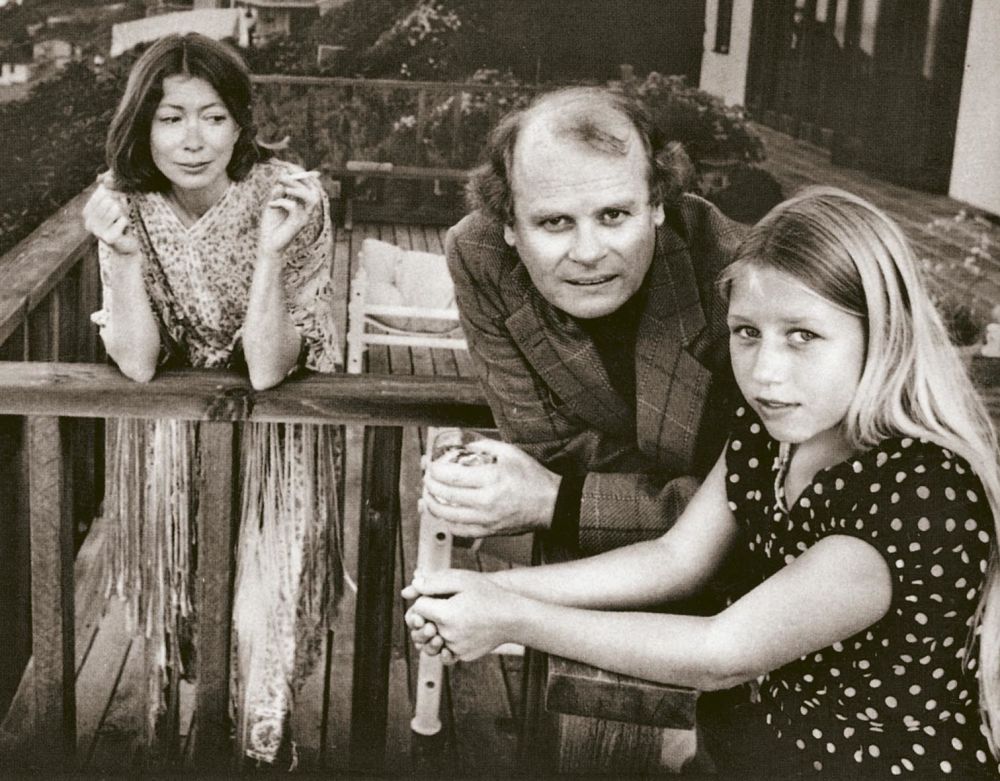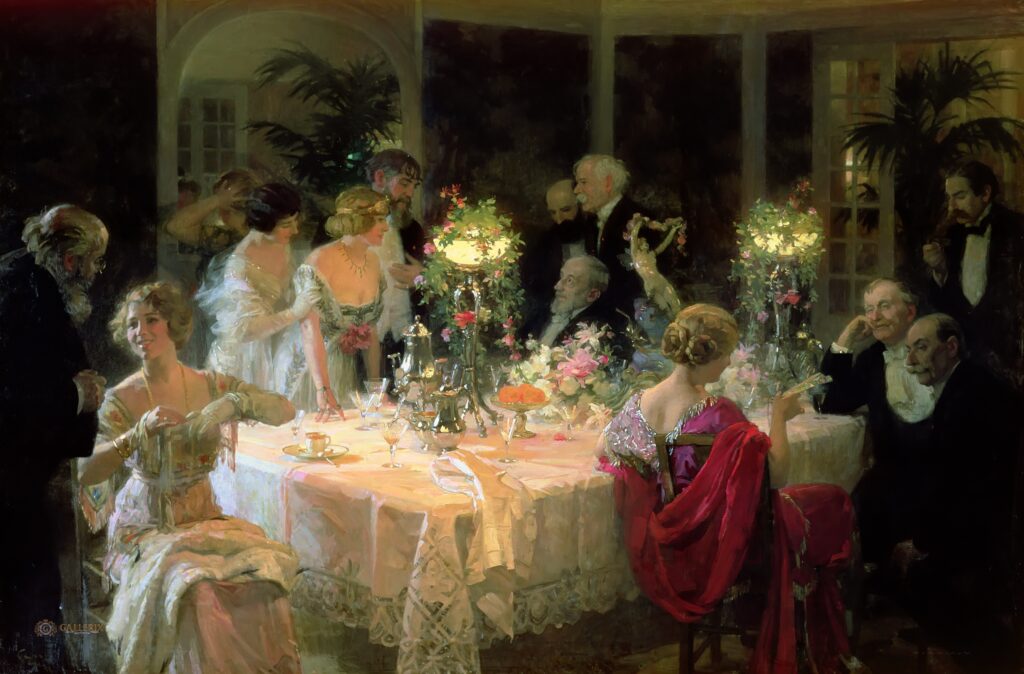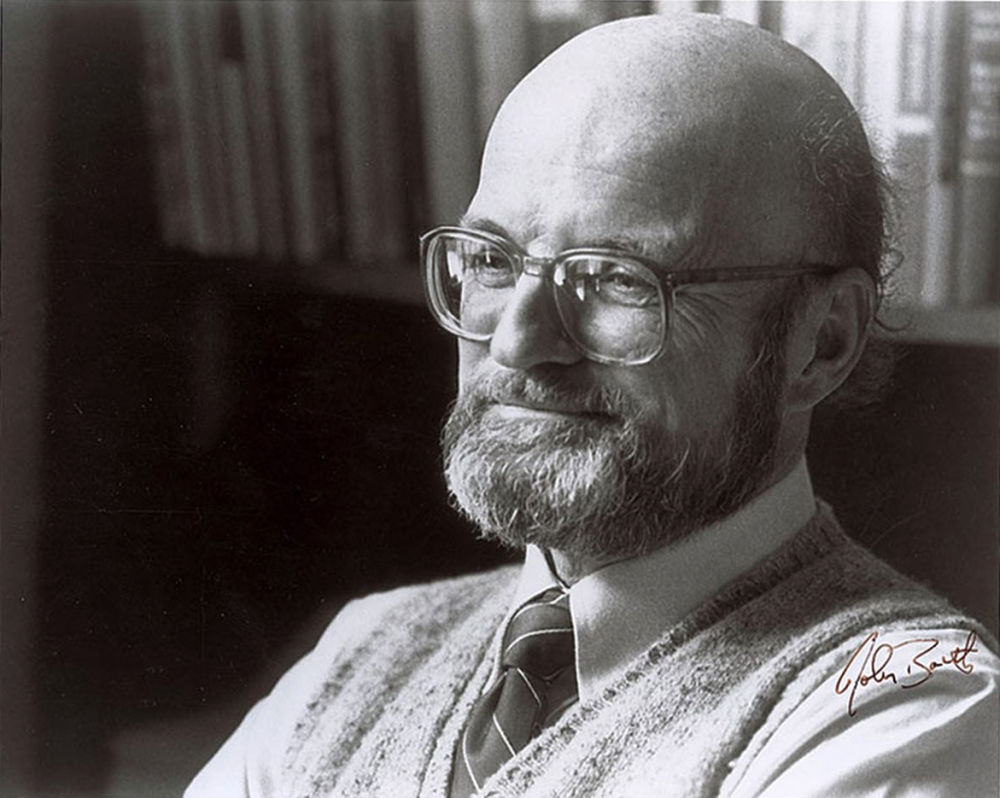Issue 138, Spring 1996

The fifth of six children, John Gregory Dunne, the son of a prominent surgeon, was born in Hartford, Connecticut in 1932. He went to school at Portsmouth Priory (now Abbey) and on graduation moved on to Princeton, graduating from there in 1954. To please his mother he applied to the Stanford Business School, but changed his mind (if not hers) and instead volunteered for the draft. He served for two years in the army as an enlisted man, his overseas service spent with a gun battery in Germany. He speaks of his years at the Priory (where the monks were “very worldly”) and in the army as being far more valuable than his time at Princeton. “In the army I was exposed to people I would not otherwise have known. I learned something about life.”
Back in the States after his service, Dunne worked briefly in an ad agency (he was fired), then with the magazine Industrial Design. In 1959 he went to Time magazine and worked there until 1964, the year he married the author Joan Didion. Since devoting himself to his own work, Dunne has written a number of novels, including The Red White and Blue, True Confessions, Dutch Shea, Jr., Vegas and Playland and two nonfiction books, Harp and The Studio. He and Didion together have written over twenty screenplays, seven of which have reached the screen: The Panic in Needle Park, Play It As It Lays, A Star Is Born, True Confessions, Hills Like White Elephants, Broken Trust, and most recently Up Close and Personal.
At present the couple lives in a large sunny apartment on New York’s Upper East Side. One is struck by how neat and ordered everything is—no sense of confusion, files in neat piles. The floors throughout the apartment are bare, polished. The considerable library is in order: the fiction titles only fill the shelves of the master bedroom.
Both have workrooms. When the pair works on a screenplay, each does a separate draft and then the two meet, sitting opposite each other at the desk in John’s workplace where they thrash out successive drafts. Here too are mementos of their work together. Photographs taken on the sets of various movies. A large police map of the streets of Los Angeles covers one wall. Authentic, it was used on the set of True Confessions—little black dots across its surface mark where crime-scene pins once stuck. On the opposite wall, a more serene scene: a blown-up photograph of Joan Didion standing in the shallows of a quiet sea holding a pair of sandals. Many photographs are of their daughter, Quintana Roo (named after a state in Mexico), now the photo editor at Elle Decor magazine. A recent addition in the workroom is a photograph of Quintana and Robert Redford, who costars with Michelle Pfeiffer in the newly released Up Close and Personal.
The interview that follows is a composite—partly conducted at the YMHA before a packed audience, partly at Dunne’s home on the East Side, with a written portion about the novel Playland added by the author himself.
INTERVIEWER
Your work is populated with the most extraordinary grotesqueries—nutty nuns, midgets, whores of the most breathtaking abilities and appetites. Do you know all these characters?
JOHN GREGORY DUNNE
Certainly I knew the nuns. You couldn’t go to a parochial school in the 1940s and not know them. They were like concentration-camp guards. They all seemed to have rulers and they hit you across the knuckles with them. The joke at St. Joseph’s Cathedral School in Hartford, Connecticut, where I grew up, was that the nuns would hit you until you bled and then hit you for bleeding. Having said that, I should also say they were great teachers. As a matter of fact, the best of my formal education came from the nuns at St. Joseph’s and from the monks at Portsmouth Priory, a Benedictine boarding school in Rhode Island where I spent my junior and senior years of high school. The nuns taught me basic reading, writing, and arithmetic; the monks taught me how to think, how to question, even to question Catholicism in order to better understand it. The nuns and the monks were far more valuable to me than my four years at Princeton. I’m not a practicing Catholic, but one thing you never lose from a Catholic education is a sense of sin and the conviction that the taint on the human condition is the natural order.
INTERVIEWER
What about the whores and midgets?
DUNNE
I suppose for that I would have to go to my informal education. I spent two years as an enlisted man in the army in Germany after the Korean War, and those two years were the most important learning experience I really ever had. I was just a tight-assed upper-middle-class kid, the son of a surgeon, and I had this sense of Ivy League entitlement, and all that was knocked out of me in the army. Princeton boys didn’t meet the white and black underclass that you meet as an enlisted draftee. It was a constituency of the dispossessed—high-school dropouts, petty criminals, rednecks, racists, gamblers, you name it—and I fit right in. I grew to hate the officer class that was my natural constituency. A Princeton classmate was an officer on my post and he told me I was to salute him and call him sir, as if I had to be reminded, and also that he would discourage any outward signs that we knew each other. I hate that son of a bitch to this day. I took care of him in Harp. Those two years in Germany gave me a subject I suppose I’ve been mining for the past God-knows-how-many years. It fit nicely with that Catholic sense of sin, the taint on the human condition. And it was in the army that I learned to appreciate whores. You didn’t meet many Vassar girls when you were serving in a gun battery on the Czech border and were in a constant state of alert in case the Red Army came rolling across the frontier. As for midgets, they’re part of that constituency of the dispossessed.
INTERVIEWER
You once said you only had one character. Is that true?
DUNNE
I’ve always thought a novelist only has one character and that is himself or herself. In my case, me. So at the risk of being glib, I am the priest in True Confessions and the criminal lawyer in Dutch Shea, Jr. I’ve certainly never been a cop or a priest or a pimp lawyer, but these protagonists are in a sense my mouthpieces. I like to learn about their professions, which is why I like doing nonfiction so much. I’m a great believer in the novelist being “on the scene,” reporting, traveling, meeting all sorts of people. You do nonfiction, you get to meet people you would not normally meet. I’m not a bad mimic and I can pick up speech cadences that I would not pick up if I didn’t hit the road.
INTERVIEWER
Do you think novels have a life of their own?
DUNNE
Before I began writing fiction I thought that was nonsense. Then I learned otherwise. Let me give you an example. In The Red White and Blue, I started off thinking the protagonist would be the Benedictine priest, Bro Broderick. I realized rather quickly that he could not be but that I was stuck with him as a character. He never really came to life until I finished the book and went back and inserted his diary, which he had left in his will to the Widener Library at Harvard. Then for three hundred pages or so I thought the leading character was the radical lawyer Leah Kaye, because whenever she appeared on the scene the book took off. Then when I got to page five hundred of this seven-hundred-fifty page manuscript I realized she couldn’t be the leading character because she had not appeared in over two hundred pages. It was only then that I realized that the narrator, who was the only survivor of the three major protagonists, would have to be the leading character. So novels do take charge of the writer, and the writer is basically a kind of sheepdog just trying to keep things on track.
INTERVIEWER
Can you say something about the germination of a book?
DUNNE
I think any time a writer tells you where a book starts, he is lying, because I don’t think he knows. You don’t start off saying, “I’m going to write this grand saga about the human condition.” It’s a form of accretion. When my wife and I were in Indonesia in 1980 or 1981, we ran into this man who had been a University of Maryland extension teacher during the Vietnam War. He was stationed at Cam Ranh Bay. These GIs would go off in the morning in their choppers and when they’d come back at night—if they were lucky—he would teach them remedial English. I made a note of it in my notebook, putting it away because I knew this was a really great way to look at the Vietnam War, and it turned up in The Red White and Blue. When I am between books I am an inveterate note taker. I jot things down mainly because they give me a buzz. I like to go to the library and take a month’s newspaper, say August of 1962, and read through it. You can find great stuff in those little filler sections at the bottom of a page. Then when it comes time to start writing a book, I sort of look through the stuff and see if any of it works. I also write down names. If you have a name it can set someone in place. I have a great friend in California, the Irish novelist Brian Moore. We were having dinner one night and Brian said that when he was a newspaperman in Montreal a local character there was named Shake-Hands McCarthy. I said, Stop! Are you ever going to use that name? He said, No, let me tell you about him. I said, No, I don’t want to know anything about him. I just want to use that name. So the name turned up in True Confessions. When I heard the name I had no idea when I was going to use it if, indeed, ever. But it was a name that absolutely set a character in cement. We had dinner with Joyce Carol Oates at Princeton once; she was saying that she does the same thing, that she collects those little fillers. She never knows when she’s going to use them; she just throws them in a file and oddly enough they do stick.
To get back to your question, Vegas is the one book for which I can actually pinpoint the moment when it started. I was trying to think of an idea, doodling at my desk while I was talking to my wife, and I drew a heart, then a square around the heart. I found I had written five letters: V-E-G-A-S. So I not only had a subject; I had a title.
INTERVIEWER
Why is the title of Vegas reinforced by the description “a fiction”?
DUNNE
Because I had a contract for a nonfiction book. I always thought of Vegas as a novel, but Random House said, It doesn’t read like a novel, and I said, A novel is anything the writer says the book is, and since I made most of it up, it can’t be nonfiction. So we ended up calling it a fiction. A lot of it is true. The prostitute did write poetry, although the poetry I used in Vegas is not hers. It was actually written by my wife, who as a child had memorized a lot of Sara Teasdale poems. I can write you bad poetry, she said. So there are two little poems in there that Joan actually wrote.
INTERVIEWER
What is your state of mind when you are writing?
DUNNE
Essentially, writing is a sort of manual labor of the mind. It is a hard job, but there comes a moment in every book, I suppose, when you know you’re going to finish and then it becomes a kind of bliss, almost a sexual bliss. I once read something Graham Greene said about this feeling. The metaphor he used was a plane going down a runway and then, ultimately, leaving the ground. Occasionally he had books that he felt never did leave the runway; one of them was The Honorary Consul, though in retrospect he realized that it was one of his better books.
INTERVIEWER
How much do you know about the end of a book?
DUNNE
When I did Dutch Shea, Jr., I knew the last line was going to be, “I believe in God.”
INTERVIEWER
Why did you pick that line?
DUNNE
Because that’s the line the man would say as he kills himself. I wanted that most despairing of acts to end with the simple declarative sentence, “I believe in God.” In The Red White and Blue I knew the last line was going to be either yes or no, in dialogue, and the penultimate line was going to be yes or no not in dialogue. The first line of Vegas is, “In the summer of my nervous breakdown, I went to live in Las Vegas, Clark County, Nevada.” I knew that the last line of that book would be, “And in the fall, I went home.” I don’t think it’s necessary to have a last line; I just like to know where in general I’m going. I have a terrible time plotting. I only plot about thirty pages in front of where I am. I once had dinner with Ross MacDonald, who did the Lew Archer novels about a California private detective. He said he spent eighteen months actually plotting out a book—every single nuance. Then he sat down and wrote the book in one shot from beginning to end—six months to write the book and eighteen to plot it out. If you’ve ever read one of those books, it’s so intricately plotted it’s like a watch, a very expensive watch.
INTERVIEWER
You have said that you have a lot of trouble with plotting a book. What makes it move forward?
DUNNE
I have no grand plan of what I’m going to do. I had no idea who killed the girl in True Confessions until the day I wrote it. I knew it would be someone who was not relevant to the story. I had always planned that. But who the actual killer was, I simply had no idea. Years before, I had clipped something from the Los Angeles Times in the small death notices. It was the death of a barber. I had put that up on my bulletin board. I was figuring out “now who . . .”—getting to the moment when I had to reveal who killed this girl, with not the foggiest idea who did it, and my eyes glommed onto this death notice of a barber. I said, Oops, you’re it. One must have enormous confidence to wait to figure these things out until the time comes.
INTERVIEWER
Do you have great affection for your characters?
DUNNE
You have to have affection for them because you can’t live with them for two years or three years without liking them. But I have no trouble killing them off.
INTERVIEWER
Is there a considerable shifting of gears in moving between nonfiction and fiction?
DUNNE
There’s a technical difference. I find that the sentences are more ornate and elaborate in nonfiction because you don’t have dialogue to get you on your way. Nonfiction has its ruffles and flourishes, clauses and semicolons. I never use a semicolon in fiction.




